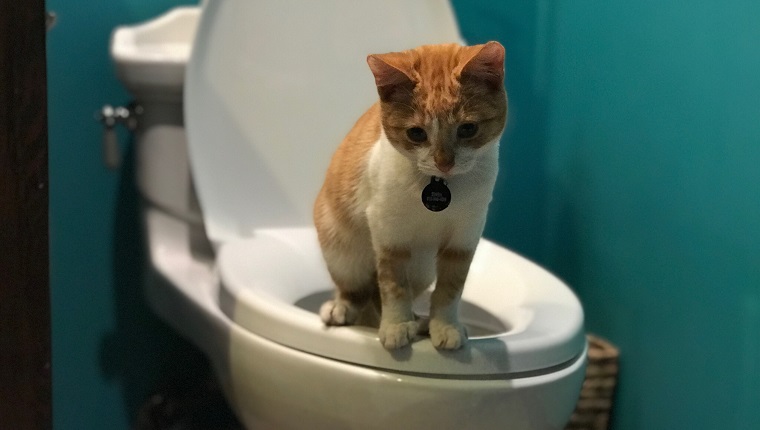Avoid Plumbing Problems: Never Flush Cat Poop Down Your Toilet - Expert Guidance
Avoid Plumbing Problems: Never Flush Cat Poop Down Your Toilet - Expert Guidance
Blog Article
This article below on the subject of Can You Flush Cat Poo or Litter Down the Toilet? is particularly interesting. Have a go and draw your own conclusions.
Intro
As cat proprietors, it's necessary to be mindful of exactly how we deal with our feline friends' waste. While it may appear convenient to purge cat poop down the bathroom, this method can have destructive repercussions for both the setting and human health.
Environmental Impact
Purging pet cat poop introduces damaging pathogens and parasites right into the water, posing a significant danger to water environments. These impurities can adversely influence marine life and compromise water quality.
Health Risks
In addition to environmental concerns, flushing pet cat waste can additionally posture health risks to human beings. Pet cat feces may include Toxoplasma gondii, a parasite that can create toxoplasmosis-- a potentially severe illness, specifically for expecting ladies and individuals with damaged immune systems.
Alternatives to Flushing
Fortunately, there are more secure and more liable ways to throw away cat poop. Think about the adhering to choices:
1. Scoop and Dispose in Trash
The most common method of dealing with feline poop is to scoop it right into a naturally degradable bag and throw it in the garbage. Make certain to utilize a devoted litter scoop and take care of the waste promptly.
2. Use Biodegradable Litter
Opt for biodegradable cat litter made from products such as corn or wheat. These clutters are environmentally friendly and can be safely disposed of in the garbage.
3. Hide in the Yard
If you have a lawn, consider hiding feline waste in a designated location away from vegetable yards and water resources. Make sure to dig deep enough to stop contamination of groundwater.
4. Set Up a Pet Waste Disposal System
Buy a family pet waste disposal system especially developed for pet cat waste. These systems use enzymes to break down the waste, lowering smell and environmental effect.
Verdict
Responsible family pet possession extends beyond giving food and shelter-- it likewise entails correct waste administration. By avoiding purging cat poop down the bathroom and selecting different disposal approaches, we can minimize our environmental footprint and safeguard human health and wellness.
Why Can’t I Flush Cat Poop?
It Spreads a Parasite
Cats are frequently infected with a parasite called toxoplasma gondii. The parasite causes an infection called toxoplasmosis. It is usually harmless to cats. The parasite only uses cat poop as a host for its eggs. Otherwise, the cat’s immune system usually keeps the infection at low enough levels to maintain its own health. But it does not stop the develop of eggs. These eggs are tiny and surprisingly tough. They may survive for a year before they begin to grow. But that’s the problem.
Our wastewater system is not designed to deal with toxoplasmosis eggs. Instead, most eggs will flush from your toilet into sewers and wastewater management plants. After the sewage is treated for many other harmful things in it, it is typically released into local rivers, lakes, or oceans. Here, the toxoplasmosis eggs can find new hosts, including starfish, crabs, otters, and many other wildlife. For many, this is a significant risk to their health. Toxoplasmosis can also end up infecting water sources that are important for agriculture, which means our deer, pigs, and sheep can get infected too.
Is There Risk to Humans?
There can be a risk to human life from flushing cat poop down the toilet. If you do so, the parasites from your cat’s poop can end up in shellfish, game animals, or livestock. If this meat is then served raw or undercooked, the people who eat it can get sick.
In fact, according to the CDC, 40 million people in the United States are infected with toxoplasma gondii. They get it from exposure to infected seafood, or from some kind of cat poop contamination, like drinking from a stream that is contaminated or touching anything that has come into contact with cat poop. That includes just cleaning a cat litter box.
Most people who get infected with these parasites will not develop any symptoms. However, for pregnant women or for those with compromised immune systems, the parasite can cause severe health problems.
How to Handle Cat Poop
The best way to handle cat poop is actually to clean the box more often. The eggs that the parasite sheds will not become active until one to five days after the cat poops. That means that if you clean daily, you’re much less likely to come into direct contact with infectious eggs.
That said, always dispose of cat poop in the garbage and not down the toilet. Wash your hands before and after you clean the litter box, and bring the bag of poop right outside to your garbage bins.
https://trenchlesssolutionsusa.com/why-cant-i-flush-cat-poop/

Do you really like reading about How to Dispose of Cat Poop and Litter Without Plastic Bags? Post a remark directly below. We'd be interested to find out your opinion about this posting. We hope that you come back again in the future. Be sure to take the time to promote this write-up if you appreciated it. We cherish reading our article about How to Dispose of Cat Poop and Litter Without Plastic Bags.
Get A Free Estimate Report this page